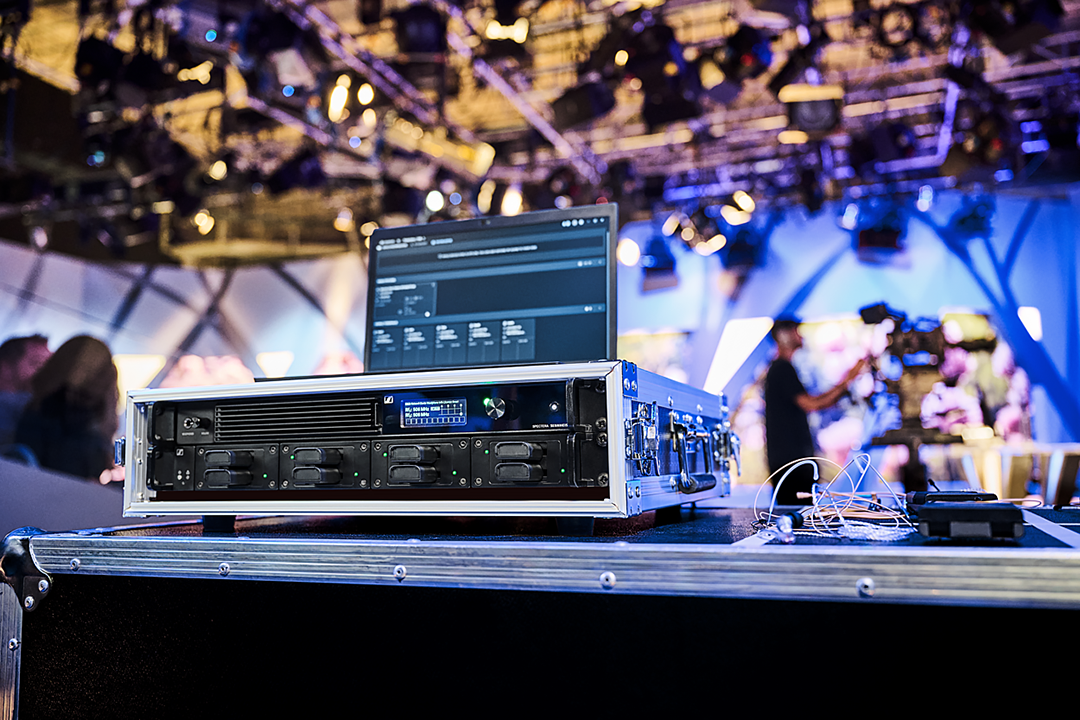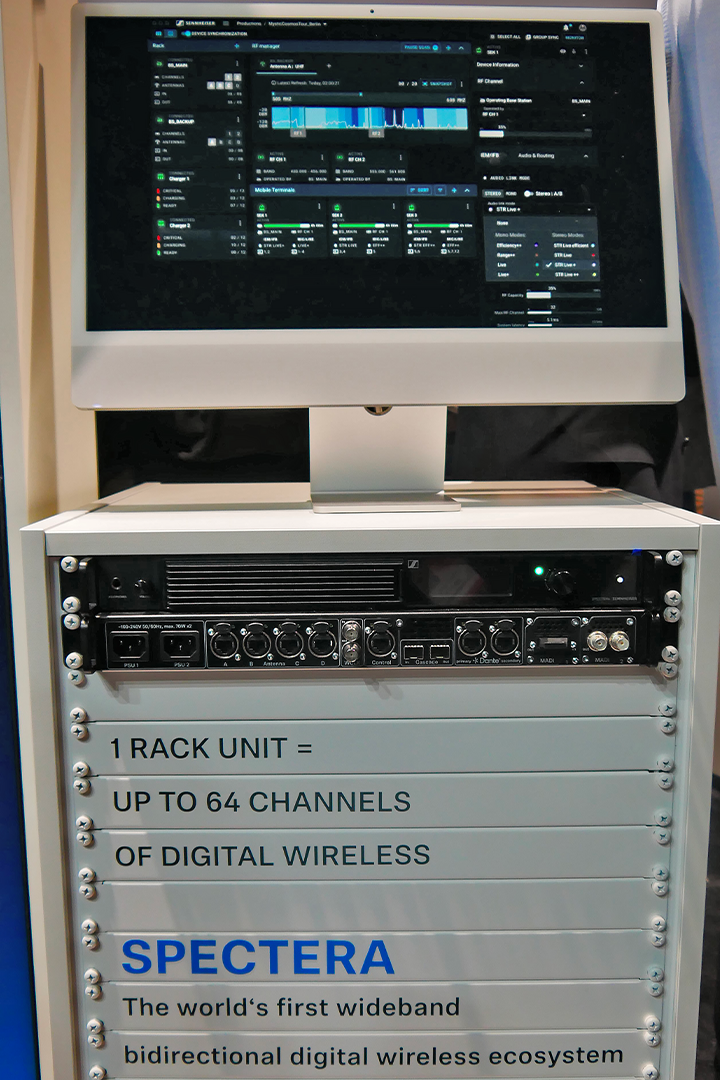If we were to trace out the history of pro audio in terms of major revolutions, as was the case with the line array, digital processing or direct-to-disk recording, we can acknowledge that it has become rather quiet since the end of the 1990s. Spatialized sound reinforcement has recently opened up new possibilities, but it’s one of the few recent developments in our field.
At every trade show, we keep an eye out for new developments and report back to you on the very latest – some exciting and useful, but not enough to shake off the gloom of our technical environment. When will the next revolution arrive? Well, today… and in a field where you certainly weren’t expecting it: wireless pro audio.
At IBC 2024, which has just concluded, Sennheiser presented the first bi-directional broadband digital wireless ecosystem. Words we’re not used to saying together, but which perfectly describe this new paradigm, the one that will change everything in the way wireless audio links are handled. It goes by the lovely name of SPECTERA.

Spectera is the first two-way broadband wireless audio system on the market using WMAS technology. It forms an extremely flexible and powerful ecosystem built around a base station capable of managing two RF channels and 64 audio channels – 32 inputs and 32 outputs – all in a single rack unit.
It has four RJ45 inputs for bidirectional DAD antennas, and can manage up to 128 bidirectional SEK bodypacks per RF channel, offering a simultaneous microphone link and a mono or stereo IEM link, all configured and controlled using the LinkDesk software, which is compatible with both Mac and Windows.
The system is remarkably insusceptible to RF interference and allows flexible use of its broadband transmission, offering a choice of 11 different audio transmission modes that can be configured for each audio link. One SEK body pack can handle two transmission modes independently, the most powerful of which can operate as a digital IEM with a latency of 0.7 milliseconds.
Sennheiser’s use of the new WMAS transmission technology is an absolute game-changer. It will transform our way of doing things and introduce a completely new vision of wireless audio transmission, as Andreas Sennheiser explained at the presentation ceremony: “This new approach can be compared to what we have been doing with a smartphone and its dedicated controls, as a platform that is agnostic with regard to hardware constraints, and which can evolve according to your needs by means of simple software commands”.
The Spectera system is already fully operational. It was used during the event, and we were able to learn more about it the following day on the manufacturer’s stand at the exhibition, with the help of Charly Fourcade, applications engineer at Sennheiser France, who, despite the crowds and the difficulty of finding a free demonstration booth, was able to give us a very detailed explanation of how it works.
SLU : The Spectera system uses WMAS technology?
Charly Fourcade : Yes, I’m very clear on the subject of WMAS. It’s a technology defined by ETSI that can be considered a specification, providing a new legal framework for communication channels.
ETSI used to stipulate that a transmission channel for wireless pro audio was to be in a narrow band of 200 kHz with a certain mask, but now WMAS means that a wireless audio transmission system using broadband digital transmission techniques must be capable of a density of at least three audio channels per MHz.
Each manufacturer is then free to develop its own solutions within this framework.
SLU : Can you tell us more about how you’re making use of this technology?
Charly Fourcade : This work has been going on for many years, and it began long before this standard was defined. The idea was already there, but the challenge was to achieve acceptable latency. This is the fundamental challenge with audio, and we can’t ignore it. We had to design something that could function with a very short delay.
We use OFDM (orthogonal frequency-division multiplexing) data multiplexing, which does not use a single carrier, but lots of sub-carriers that transmit the interpretation of the message, which has previously been split up in the time domain in the form of “slots” using the TDMA (time division multiple access) technique.
Some timeslots are dedicated to audio and others to data and synchronization. Obviously, for audio, all the terminals have to be synchronised. Next, the system can exploit the number of slots used for a link according to demand. For example, several slots for a mix that needs to be transmitted in very high quality; and for a talkback microphone that doesn’t need high audio quality but the range of which needs to be very long, it will send more data packets that contain little information. We have created a system that is totally configurable in terms of each link.
SLU : So each link can have different modulation modes?
Charly Fourcade : Yes, that’s possible! Each audio link, which is set up between the base station and the terminals (IEM) or between the terminals and the base station (MIC), can be freely selected from the audio link modes. And depending on the mode chosen, different modulations can be used. Here are a few examples:
– The “MAX Range” mode transmits the audio (only when it’s its turn – in the audio’s allocated time slots) with a modulation that’s very easy to demodulate (BPSK type), so you can count on having longer range.
– The “RAW” mode transmits uncompressed audio with a more demanding modulation in terms of RF signal-to-noise ratio (64 QAM type). The range will be more limited, but the quantity of information transmitted will be much greater!
– And there are other modes where you’re essentially playing with latency plus range versus the number of links per RF channel. For example, the same amount of information can be transmitted more often (and therefore over more time slots). As a result, latency will decrease and range will increase because the modulation used behind it will be different!
For more information, watch this animation by clicking on the image below:

SLU : So the engine of the Spectera system is intelligent?
Charly Fourcade : We wanted to develop a highly adaptable system using our software. However, it remains transparent to the user, who doesn’t see all the slot information and can manage it very simply, rather like a telephone operator. He deploys at least one antenna, chooses an RF channel and allocates the terminals, the body packs, then configures their connection mode according to his needs and the desired quality. Next, the operator draws the connection lines to the base’s physical inputs/outputs in both directions, from the terminals to the base for the microphones, and from the base to the terminals for the IEMs.
Yes, you’re getting the idea. The Spectera system is a fully customisable wireless transmission system, capable of managing up to 128 bi-directional transmission units per broadband transmission channel.
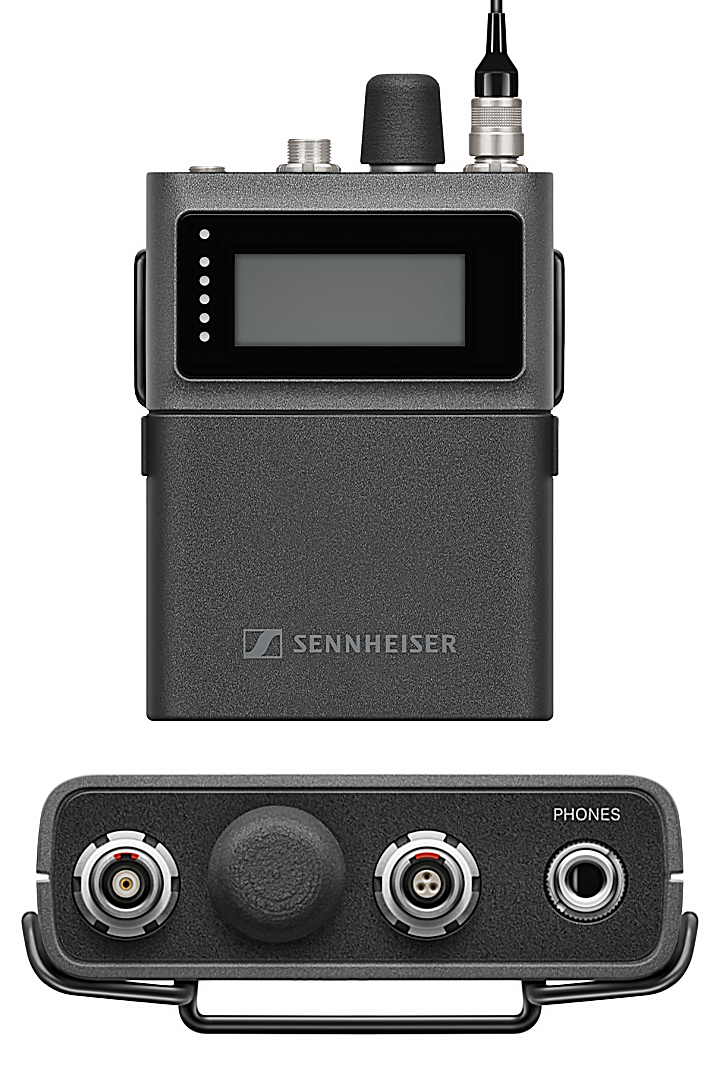
A single Spectera SEK body pack can be used for wireless transmission of a mic- or line-level signal or for receiving a mono or stereo IEM signal.
It can be controlled and monitored remotely via its RF connection from the LinkDesk software, allowing control of the IEM volume, audio parameters, transmission quality and battery.
It features a high-power, impedance-matched headphone amplifier and, thanks to its rechargeable BA 70 lithium-ion battery, up to seven hours of operating time, depending on the selected Audio Link mode and settings.

It features a continuous E-Ink display for constant information, with status and level indicators. Its name is always visible on the screen, even when its batteries are removed.
SLU : So the radio links can be configured to suit your latency requirements?
Charly Fourcade : Yes, by choosing from the available transmission modes. There are four stereo modes and seven mono modes. In stereo, latencies range from 2.6 ms to 0.7 ms. In mono, latencies range from 15.2 ms to 1 ms. The lowest latency achieved by Spectera is 0.7 ms (all inclusive) from the base station to the body packs (IEM mode) and 1 ms from the body pack to the base station (mic/line mode).

The Spectera base station offers two broadband RF channels to handle all the wireless transmissions distributed over 64 channels, with full configuration flexibility between 32 physical inputs and 32 physical outputs. It has a redundant Dante I/O as standard.
Two slots are available for a redundant BNC or optical MADI connections. All channels are synchronised via wireless transmission for signal packages where phase is critical, such as immersive formats, and there is a word clock input/output.
A cascade port enables system expansion and complete redundancy of the base. Transmissions are, of course, secured by AES256 encoding, and each has an independent selection of 11 wireless link modes, along with a choice of audio codecs (OPUS, SeDAC) or PCM.
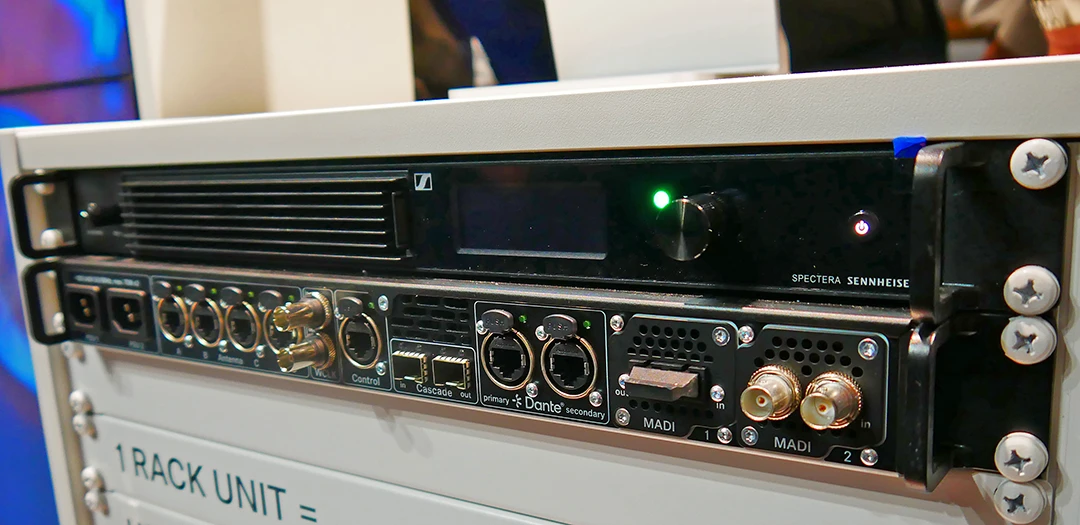
SLU : This base station looks like it’s made to integrate seamlessly into control booth setups, doesn’t it?
Charly Fourcade : That’s the whole point. In addition to Dante and MADI support, the base offers sample rate conversion on all digital inputs and outputs. This means you can feed three mixing stations running at different sampling frequencies. The same goes for the other way round. Feeding the IEMs from digital sources at various sample rates poses no problem. The LinkDesk software makes it easy to manage the routing of sources and output destinations to and from the wireless links.
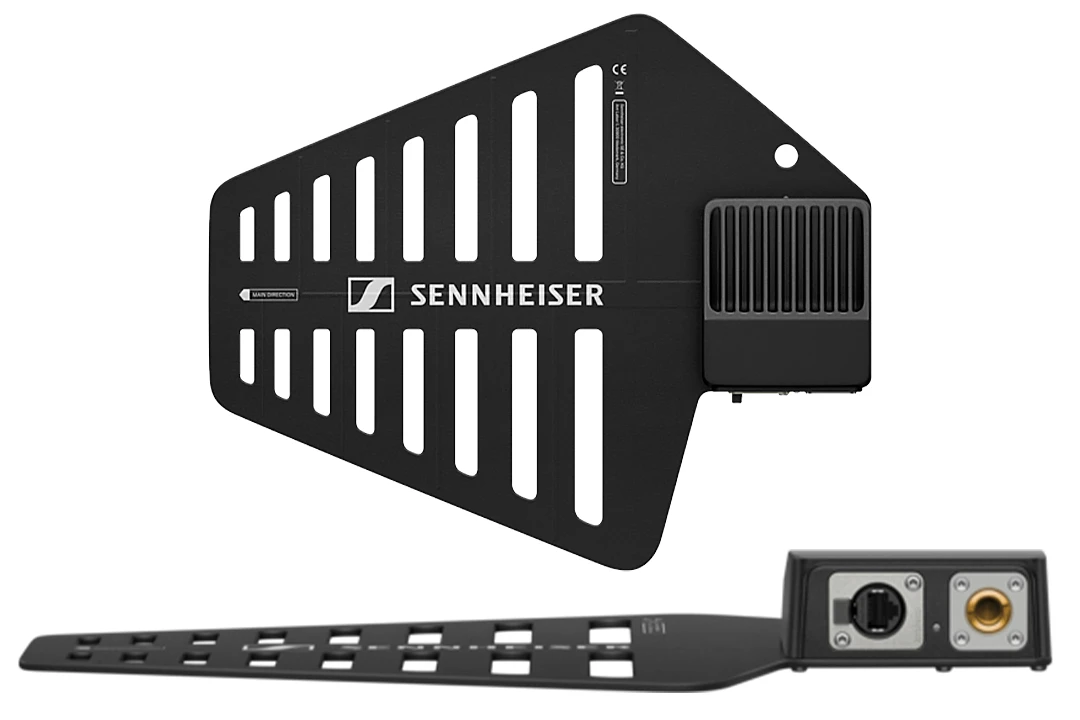
The base station provides four Ethernet antenna ports for different operating modes: redundancy, extended coverage area or extended frequency spectrum. The Spectera DAD transmitting-receiving antenna simultaneously handles IEM signals, mic/line signals, as well as data. It connects to the base station using a CAT5e cable (maximum 100 metres) via an RJ45 connector, and is IP54 and PoE compliant.
No additional RF components, such as combiners, splitters or boosters, are required. It is remote-controlled and provides continuous interference management.
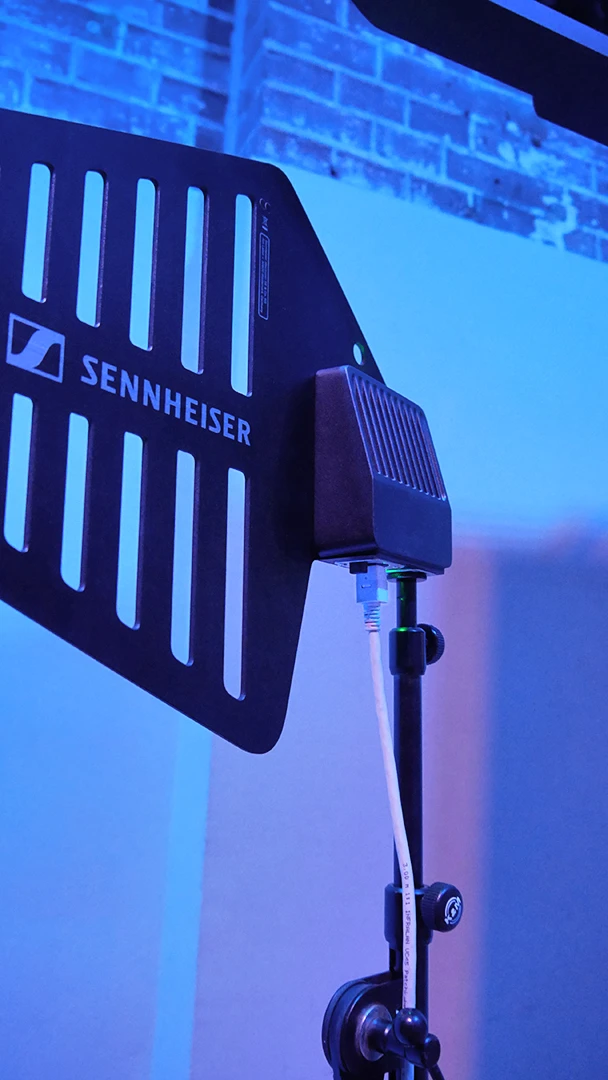
SLU : Will this new type of antenna change the way we work?
Charly Fourcade : One antenna is all you need. The Spectera system no longer needs antenna diversity, because we are no longer dealing with continuous transmission. This broadband system, using OFDM, offers a form of diversity that is 30 to 40 times more efficient than what we use in narrowband. Its signal can be transmitted over a CAT5e cable up to 100 m, or 4 km over optic fibre. It is a layer 1 Ethernet signal that cannot pass through switches.
On a single base station, we can connect up to four antennas, each of which has a specific function. Either it scans the band (470 MHz – 698 MHz), with a 5-second refresh rate, or the antenna is on channel 1 or channel 2. Actually, there are no RF components left in the base station. As a failsafe feature for shows, two antennas can be used and, unlike with narrowband, they can be positioned right next to each other.
We can also do multi-zone wireless mics and IEMs by simply deploying several antennas in various zones. There is no longer any rooming system nor constriction to a particular antenna.
SLU : Once the system is in place, what happens if an extraneous device transmits in its 8 MHz band?
Charly Fourcade : In this respect, we are also ahead of the game. Spectera is currently the only system capable of measuring the energy present at the frequency it is occupying! Today, with a narrow-band system, the only way to find out what’s happening at its frequency is to switch it off. In the slots that Spectera transmits, we have included a silent slot.
So, for a brief and, obviously, imperceptible moment, all the transmissions go silent and each terminal with its antenna scans the 8 MHz band. It can thus detect any interference in its own position and report it. The system is then alerted and can locally activate two RF rejection filters that automatically attenuate the frequencies identified as disruptive. This also enables us to avoid any blocking of the band by a disruptive frequency that would prevent it from being used in its entirety.
And of course, this applies to each terminal, which will be able to adapt autonomously depending on its position. We don’t need to modify the wide frequency band in which we work, because in this band we have a lot of sub-carriers. Of course we have dropouts in RF, as we normally do, but we have redundancy to compensate for them.

SLU : And what if we had to change bands, for one reason or another?
Charly Fourcade : A complete change of the frequency of the transmission band takes 20 seconds. Let’s say you’re playing in Lyon and Dijon and you switch from 490 to 520, all your units will be ready to work in less than 20 seconds. It’s a bit like coming out of aeroplane mode on your phone. You’re back with all your components in a matter of seconds. It’s not inconceivable that frequency changes will eventually be much quicker in the future.
If the terminals and the Base Station could agree to change the frequency of the RF channel at the same time, it could happen much more quickly. For now, though, only the Base Station changes the channel frequency, and the terminals search their entire spectrum for this new frequency, hence the 20 seconds…
SLU : What about sharing the airwaves with narrow-band systems?
Charly Fourcade : We’ve tested it and it all works, provided of course that the narrowband system isn’t in Spectera’s band. We don’t need to include any guard bands around the band that Spectera is working on. Even TV channels on adjacent channels don’t cause any transmission problems.
SLU : Is the Spectera system efficient in terms of output power?
Charly Fourcade : In terms of power, a standard IEM rack with eight channels generates 400 mW at the antenna output. With Spectera, we’re transmitting at 50 mW, but because we’re using WMAS and TDMA, the terminals each transmit in turn, so there’s no accumulation of power. What’s more, this 50 mW is spread over 8 MHz. This is the equivalent of transmitting 1.8 mW in a narrow 200 kHz band.
SLU : So Spectera won’t disrupt traditional systems?
Charly Fourcade : It pollutes the spectrum much less than a narrowband system. Imagine you’re at a festival, and you’ve got a body pack on you. If you leave your stage to go to another stage far away, your body pack will drop out. It stops transmitting. It will wait until it’s back in sync before transmitting again. Similarly, if your channel is muted, it won’t transmit. So there’s a lot less RF pollution and more battery conservation. Another great feature is that simply unmuting one or more channels is enough to activate the whole system! There’s no longer any need to turn on the transmitters one by one!
The entire Spectera system is controlled and monitored using the LinkDesk software. The software’s RF manager enables continuous scanning of the spectrum via the DAD antenna selected for this function. The spectrum is displayed continuously in the upper part of the window. This provides a very clear view of the spectral activity and position of the system’s two wide frequency bands. LinkDesk’s assisted functions make managing the system quick and easy, as well as allowing you to manage, store and instantly recall multiple base station configurations.
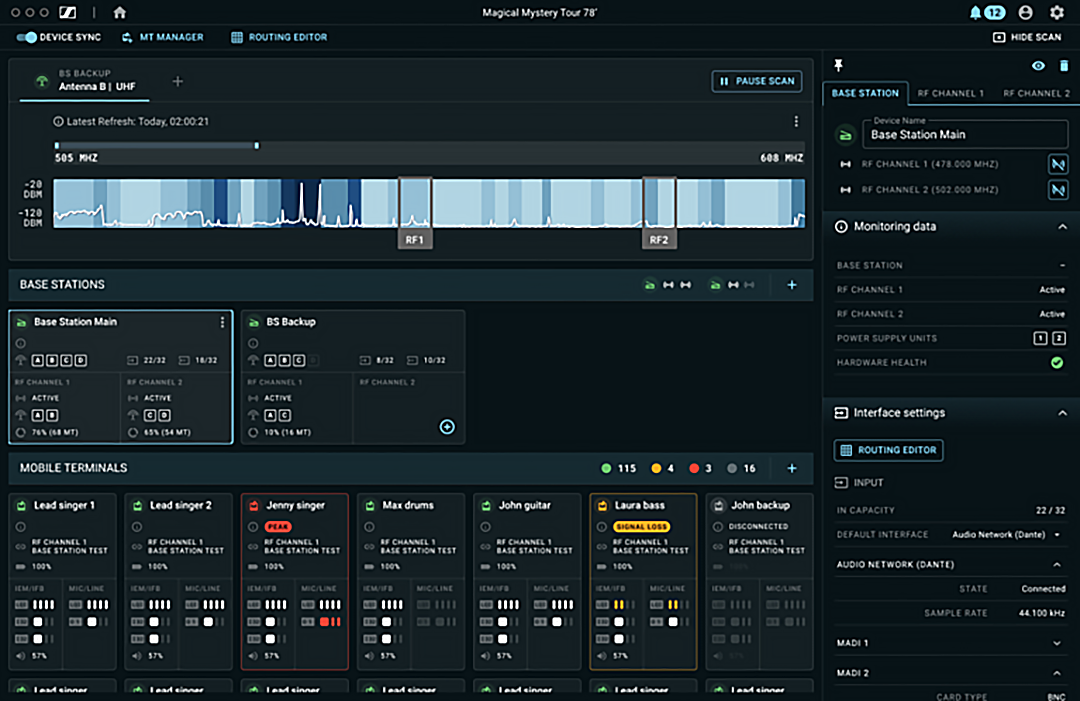
The terminals appear in the lower section of the window, with indications of battery level, audio level and audio clipping for the IEM and microphone sections. There is no longer any notion of RF reception as such, but rather of reception quality using the LQI (Link Quality Indicator) parameter. A detailed view gives access to additional parameters such as the IEM volume control or the level and low-cut filter of the microphone input. Updating this data takes the time to go round the 128 possible body packs per RF channel, i.e. a total of 256 per base station. Just a few milliseconds…
SLU : Do you choose the link mode for each body pack from the LinkDesk software?
Charly Fourcade : Yes, you can choose between different modes for the IEM and microphone components, in addition to mono or stereo use for the IEM. There are 11 modes to choose from, with latency values ranging from 15.23 ms to 0.7 ms. Naturally, the number of audio links that can be used simultaneously on an RF channel will vary according to this choice.
Using a mode that uses the same codec and has even slightly lower latency than our Series 6000 system, you can obtain 32 or 16 links per channel, depending on the required transmission range. With a minimum latency of 0.7 ms, there can only be four stereo IEMs per RF channel. To use both microphones and IEMs, we can increase the latency to 1.6 ms for eight stereo IEM links and eight microphones. All the “LIVE” modes use the same codec as our 6000 system. You can also switch to PCM for linear transmission without a codec.
To achieve the lowest possible latency, we almost always use the same audio data, which we divide into more packets and send more often. This reduces latency because the data is easier to read on reception. Of course, if the same link mode is assigned to a set of body packs, they are fully phase-synchronised. We can constantly monitor the activity level of our broadband transmission channel, depending on the modes chosen for the transmitters that use it.

The system is already available for purchase. You will of course have noticed, as we did, that there is currently no hand-held transmitter. This will be available in 2025, as will the development of the cascade system, which will extend the system to even more channels and enable complete redundancy of a base station.
With Spectera, Sennheiser is ushering in a new era in wireless audio transmission, and this is surely just the beginning. This new type of system is bound to evolve easily, thanks to the development of its monitoring and control software. Thanks to the WMAS technology it employs, the reduction in hardware greatly increases wireless transmission capacity, while reducing maintenance, handling and inventory requirements.
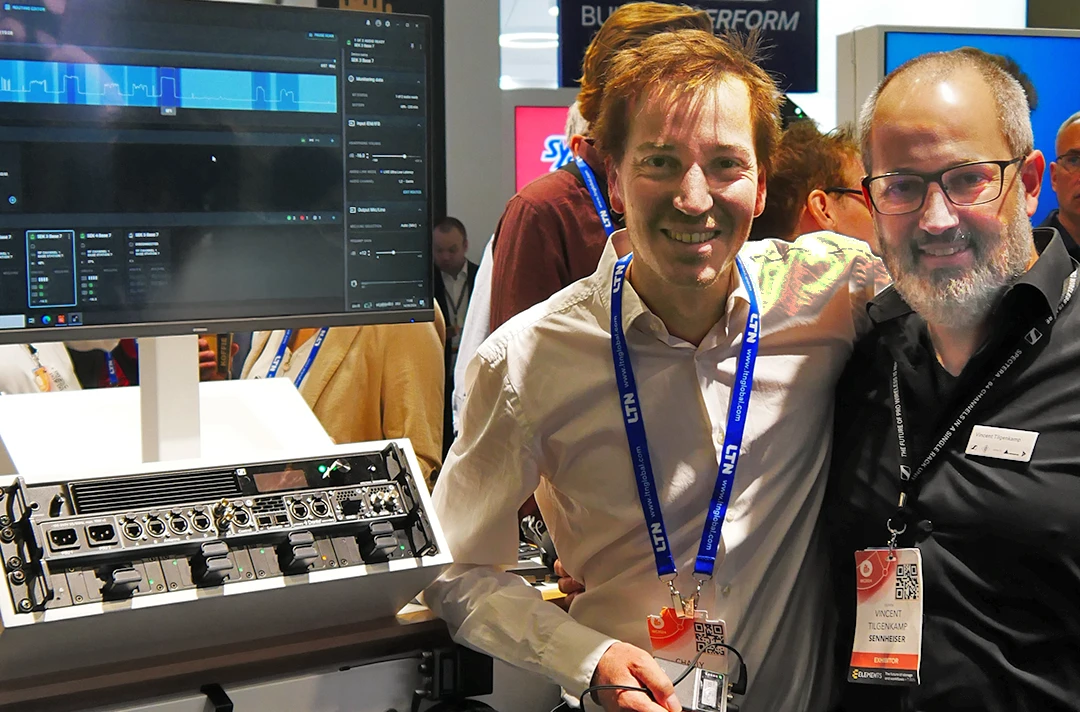
The simplicity and reliability of these radio links, as well as their bi-directionality, will bring about a significant change in our working practices. The RF operator, who will still have to set up and manage the links, will be largely relieved of frequency coordination operations and will be able to concentrate on making the most of the body pack transmitter/receivers. The artists will also benefit from this evolution with enhanced comfort on stage.
Faced with an ever-increasing demand in terms of the number of radio links required for today’s large-format events, Spectera is definitely going to be a very good solution. It will also appeal, in more discrete applications, to professionals looking for the highest quality and reliability for their wireless audio.
For further information:



